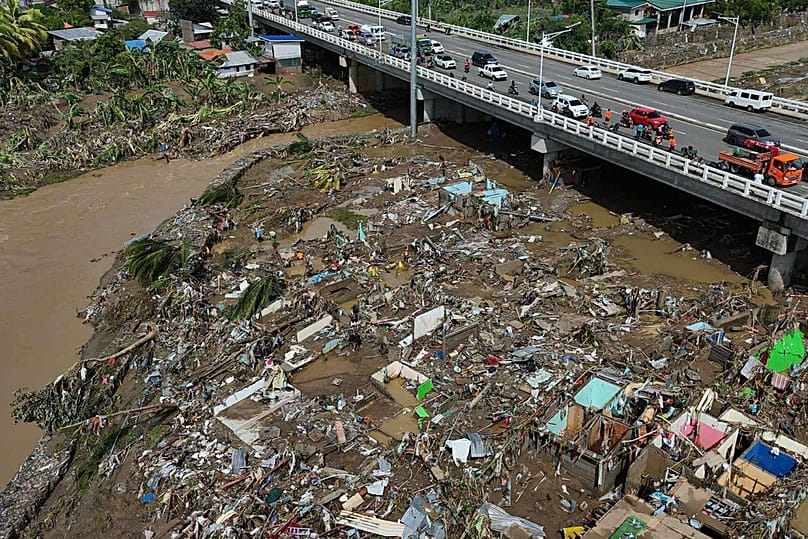According to the Office of Civil Defense, nearly 2 million people have been impacted by the typhoon's devastation, with some 560,000 villagers currently displaced.
Philippine President Ferdinand Marcos Jr. declared a state of emergency on Thursday after Typhoon Kalmaegi left at least 114 people dead and hundreds missing in central provinces in the deadliest natural disaster to hit the country this year.
The deaths were mostly from drowning in flash floods, and 127 people were still missing, many in the hard-hit central province of Cebu. The tropical cyclone blew out of the archipelago on Wednesday into the South China Sea.
Marcos’s “state of national calamity” declaration, made during a meeting with disaster-response officials to assess the typhoon’s aftermath, would allow the government to disburse emergency funds faster and prevent food hoarding and overpricing.
Nearly 2 million people affected
According to the Office of Civil Defence, nearly 2 million people were impacted by the typhoon’s onslaught, and more than 560,000 villagers were displaced, including some 450,000 who were evacuated to emergency shelters.
While still dealing with the deadly and disastrous impact of Kalmaegi in the country’s central region, disaster-response officials warned that another tropical cyclone from the Pacific could strengthen into a super typhoon and batter the northern Philippines early next week.
Among the dead attributed by officials to Kalmaegi were six people who were killed when a Philippine air force helicopter crashed in the southern province of Agusan del Sur on Tuesday.
The crew was on its way to provide humanitarian help to provinces battered by the typhoon, the military said. It did not give the cause of the crash.
Deadly impact felt in province recently struck by quake
Meanwhile, Kalmaegi set off flash floods and caused rivers and other waterways to swell in Cebu, a province recently impacted by a deadly earthquake. The resulting flooding engulfed residential communities, forcing residents to climb on their roofs, where they desperately pleaded to be rescued as the floodwaters rose, provincial officials said.
At least 71 people died in the province, mostly due to drownings, while 65 others were reported missing and 69 were injured, the Office of Civil Defense said.
According to the civil defence, there are some 62 others who were reported missing in the central province of Negros Occidental, which is located near Cebu.
“We did everything we could for the typhoon, but you know, there are really some unexpected things like flash floods,” Cebu Gov. Pamela Baricuatro said.
The problems may have been made worse by years of quarrying that caused clogging of nearby rivers, which overflowed, and substandard flood control projects in Cebu province, Baricuatro explained.
Cebu was still recovering from a 6.9 magnitude earthquake on 30 September that left at least 79 people dead and displaced thousands when houses collapsed or were severely damaged.
Authorities in the province said thousands of northern Cebu residents who were displaced by the earthquake were moved to sturdier evacuation shelters from flimsy tents before the typhoon struck.
About 20 typhoons and storms hit the Philippines every year, a country that is among the most disaster-prone in the world due to its frequent experiences with earthquakes and volcanoes.

















